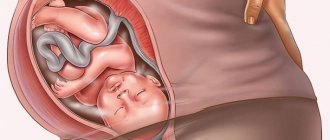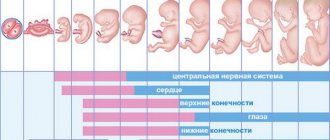Pregnancy and colostrum
At what stage of pregnancy does colostrum begin to be released?
What color and consistency should it be? How does the woman feel? How to perform hygienic breast care? These are not all the questions that pregnant women ask. You can get answers to them by reading the article. In the process of bearing a child, most women begin to be sensitive to their well-being. They are acutely aware of all the changes occurring in the body. Many pregnant women are frightened by the appearance of discharge from the breast. Gynecologists reassure impressionable women, saying that everything is fine, the breasts are just preparing to feed the baby and producing colostrum.
Purchases
Buying baby items is fun, especially for first-time parents, but it's also rewarding to think practically. Make life easier for yourself now. Stock up on essentials, from breast pads to diapers.
Make sure you and your partner have all the important numbers in your phone - your midwife, doctor and maternity ward. If you have pets and older children, take care of them when the time comes. Then you can focus only on yourself and your child.
Composition and purpose
Colostrum is a viscous, sweetish liquid with a characteristic odor produced in the female mammary glands during pregnancy and several days after delivery. Color – from yellow to translucent. It is the prototype of breast milk and, in comparison with it, contains less water, fat and sugar, but more protein.
The secretion that precedes breast milk has a composition rich in useful elements:
- proteins – albumin and globulin;
- water;
- lacto- and bifidobacteria;
- vitamins A, B, C, E, K and PP;
- fats;
- minerals;
- lactose;
- hormones;
- food enzymes;
- retinol;
- tocopherol;
- immunoglobulin;
- leukocytes.
Due to its rich composition, the secret brings invaluable benefits to the baby. It is several times higher in calories than breast milk and promotes rapid weight gain in the newborn. Due to the lesser presence of water, it does not overload the baby’s urinary system.
Properties and color
The yellow secretion of the mammary glands performs a number of functions:
- Saturation of the child’s body with immune cells (proteins). The baby’s immune system begins to work from 6 months after birth, therefore, starting from the oral cavity, the necessary cells are detached from the colostrum, which are involved in protecting the child from pathological microorganisms coming from the environment.
- Colonization of the intestines with beneficial microflora (bifidobacteria and lactobacilli). It promotes the absorption of milk and other products that the child will receive, normalizes the baby’s bowel movements, and prevents the proliferation of pathological microorganisms.
- Accelerating the excretion of meconium (original feces that fills the entire intestine of a newborn baby) and preparing the intestines for the arrival of the first portions of milk.
- Binding of excess bilirubin from the baby’s blood and intestines, which prevents the development of jaundice.
- Enriching the child with essential vitamins and minerals, which are essential from the first days of life for the physiological development and growth of tissues and organs.
- Saturation of the baby's blood with antioxidants, which help adapt to a new environment, especially in the respiratory system.
- Acceleration of the maturation of the intestinal epithelium due to growth factors (cortisol, insulin, insulin-like growth factor - IGF, epidermal growth factor - EGF).
importantColostrum is extremely nutritious and is extremely necessary for a child in the first days of life. During its production during pregnancy, it accumulates many nutrients and has an ideal composition, starting from the first breastfeeding in the delivery room.
Regardless of what stage of pregnancy yellow colostrum is released, it performs a number of functions:
- Satisfying your child with proteins. The baby's immune system begins to work at 6 months. From the nutrient fluid it receives cells involved in protection against pathological microorganisms.
- Colonization of the intestinal microflora with beneficial microflora. Thanks to this, milk is digested, the process of defecation is normalized, and pathological microorganisms stop multiplying.
- Acceleration of excretion of original feces - meconium. This is a very important function that colostrum performs in pregnant women. Without this, the baby’s gastrointestinal tract will not be able to function properly.
- Prevents the development of jaundice due to the binding of excess bilirubin in the intestines and blood.
- Enrichment with vitamins and minerals.
- Loaded with antioxidants.
When is colostrum formed during pregnancy?
After fertilization, the female body undergoes many changes. This is how he adapts to the new state. The breast prepares for lactation throughout the entire gestation period. At this time, the concentration of hormones in the pregnant woman’s body changes. The production of prolactin, the hormone responsible for the lactation process, increases. At the same time, an increase in the milk ducts and lobules of the gland occurs. The work of the latter is activated, which leads to the process of colostrum formation.
In primiparous women
In women carrying a child for the first time, preparation for the production of breast milk may begin not from the moment of conception, but somewhat later. The body is experiencing pregnancy for the first time, and it takes time to rebuild. However, having “experience” in this matter is not a decisive factor. Lactation (including colostrum production) is influenced by many factors.
In women who give birth repeatedly
Women who have given birth before observe the appearance of the milk prototype at an earlier stage compared to first-time mothers. Their body knows what to prepare for and how to behave. It takes him much less time to adapt to the new situation. Despite this, not all pregnant women experience an early rush of nutrient secretions.
How the fetus develops at 33 weeks of pregnancy
- The child is growing rapidly and gaining weight daily. Its height reaches approximately 50 cm, and its weight is 2 kg. On average, he gains from 15 to 30 grams per day , that is, about 1% of body weight.
- The baby becomes cramped in the uterus, so he makes fewer sudden movements and stretches and rolls more. He rests his chin on his chest and crosses his arms and legs.
- At 33 weeks of pregnancy, in most cases the baby has already turned head down.
- The baby's appearance changes. His shoulders become rounder, his cheeks thicken, his face becomes smooth. This occurs due to the accumulation of fatty tissue.
- The nails on the fingers have grown to the edge of the nail hole, but on the toes they are not yet there.
- The cartilages of the nose and ears have hardened.
- The child has already “learned” to breathe, swallow and suck.
- At 33 weeks of pregnancy, the baby is mostly asleep. There is an opinion that he dreams. His pupils make movements similar to those inherent in a person during sleep.
- The germinal fluff, called lanugo, begins to disappear. It is designed to retain a waxy substance (vernix) secreted by the fetal body. Instead of a fluff, hairs begin to emerge.
- The layer of vernix, which is a grayish-white substance secreted by the sebaceous glands and mixed with skin scales, increases noticeably.
Important! Lubrication helps the fetus survive in the mother's womb and then overcome the birth canal. In addition, it is involved in the regulation of water metabolism and has antiseptic and antibacterial properties. In this regard, in some maternity hospitals the lubricant is not removed within two hours after the baby is born.
Signs of colostrum during pregnancy
Before the appearance of colostrum, you may experience discomfort in the breasts: itching and tingling. This is explained by the movement of secretions through the ducts. The breasts increase in size, become heavy and firm to the touch.
What month should I wait?
The production of colostrum begins to occur from the earliest stages of gestation. However, it can only be noticed at a later stage. In 20% of cases, pregnant women notice the appearance of fluid in the early stages of gestation.
The remaining 80% of women do not see or feel the appearance of a secretion until the 12th week. In the early stages, the amount of secretion is still too small and is not released from the nipples of the pregnant woman.
The second trimester (13-30 weeks of gestation) is marked by increased production of prototype breast milk. Most pregnant women notice the appearance of sticky liquid on their underwear. Colostrum may not be released every day in the second trimester. Doesn't depend on its appearance or time of day.
Late pregnancy (from 31 weeks until delivery) is characterized by abundant production of nutritious secretions. By this time, the color of the colostrum loses its saturation, and its quantity may remain virtually unchanged.
The moment when colostrum appears varies from person to person. It is impossible to say exactly when to expect it. Strengthening its production is influenced by:
- emotional shocks (positive or negative);
- hot shower or bath;
- high temperatures and high humidity in the room;
- hot drink;
- sexual contact;
- breast massage;
- genetic predisposition.
What color is the discharge from the nipples?
The acceptable color of the secretion is yellow or cream shades; the appearance of a translucent liquid is possible.
Typically, at the beginning of the production process, yellow or cream-colored colostrum is released. During gestation, its color changes and in later stages the secreted fluid may become transparent.
Does your chest hurt?
During the flow of colostrum, a woman may experience some discomfort in her breasts. It manifests itself with itching and tingling. This is normal, as the woman feels the fluid moving through the milk ducts.
If pain occurs in the chest area, especially associated with a feeling of heaviness in the lower back, you must inform your doctor. This way the body can signal the risk of miscarriage or premature birth.
The appearance of chest pain can signal the presence of inflammation in the body, which can trigger the occurrence of mastitis and congestion in the chest. In such conditions, breast milk poses a danger to the baby. To prevent such situations, you need to promptly inform your gynecologist about changes in your health.
Where does colostrum accumulate?
The main purpose of the female breast is to feed offspring. There are cavities inside it designed to store milk during lactation. When the concentration of prolactin in the body increases during pregnancy, the process of producing breast milk starts. At first, it is immature and is excreted in the form of colostrum. During pregnancy, its amount is small and it accumulates in the milk ducts. As the volume increases, colostrum begins to flow into the breast cavities and, when they are filled, spontaneously flows out through the nipples.
How much colostrum should you have during pregnancy?
The production of colostrum is an individual feature of each organism. It can be released in the amount of 1 drop or 2.5 ml at a time. In this range, the volume of fluid is considered normal. If there is a significant increase in the amount of breast secretion, you should inform your doctor.
When the volume of colostrum produced suddenly increases in the blood of a pregnant woman, the concentration of the hormone oxytocin increases. This hormone in large quantities can provoke an increase in uterine tone, which can lead to spontaneous abortion or premature birth.
What happens to a woman’s body at 33 weeks of pregnancy
At the 33rd week of pregnancy, the following changes are observed in the mother’s body:
- Rapid weight gain occurs . At 33 weeks of pregnancy, the total number of kilograms gained fluctuates between 10-13 kg. Their gain continues, it is approximately 0.5 kg per week. If this figure is exceeded, most likely this is due to hidden edema.
- The uterus has greatly increased in size . It has risen to the level of the ribs, so the pregnant woman’s breathing is difficult, it seems to her that there is not enough air.
- The expectant mother feels the movement of the baby's legs almost under her heart .
- Due to hormonal changes, during which a pregnant woman loses much less hair than she grows, body hair may increase . This process is natural.
- may appear .
Attention! The more a woman weighed before pregnancy, the more kilograms she can gain during pregnancy. If you gain weight more than 0.5 kg, you should consult a doctor. He may prescribe fasting days or appropriate medications.
If your glands produce clear fluid instead of yellow colostrum
Clear colostrum is not a deviation from the norm. The color may be different for each woman. Usually at the beginning of its appearance it is yellowish or cream-colored. Towards the end of pregnancy, its shade becomes less saturated, and sometimes disappears altogether. In such situations, the allocated secret becomes transparent.
Some women produce clear colostrum from the very beginning of its production. To completely reassure the pregnant woman, it is recommended to inform the doctor who is managing the pregnancy about this.
Childbirth at 33 weeks
Important! Childbirth at 33 weeks is not uncommon. Usually doctors try to do everything possible to stop this process. But when the amniotic fluid has already broken, it is impossible to delay childbirth. Therefore, in such a situation, it is necessary to promptly contact doctors.
The cause of premature birth may be:
- Severe stress.
- Sexual infections transmitted from mother to fetus.
- Crowded.
- Unbearable physical activity.
- Injuries from falls or impacts.
- Poor nutrition of the mother, and, accordingly, the child.
- Predisposition of the maternal body to miscarriages.
- Pathological condition of the uterus.
- Lack of hormones accompanying pregnancy.
- Improper fetal development.
At 33 weeks of pregnancy, signs of preterm labor may include:
- Severe pain in the lower back and lower abdomen.
- Immobility or, conversely, increased activity of the fetus.
- Copious vaginal discharge.
- Bleeding.
- Contractions.
Important! If a woman starts bleeding at 33 weeks of pregnancy, there is a high chance that she will give birth by cesarean section.
If there is bloody discharge from the nipples
The presence of a small amount of blood in colostrum is normal (especially in late pregnancy). When preparing the body for childbirth, a woman's production of immature milk (colostrum) increases.
The milk ducts stretch as the flow of secretions into the breast increases. This may be accompanied by microcracks in blood vessels. The result is the appearance of blood impurities in the colostrum.
If colostrum contains a large amount of blood, urgent medical consultation is required. This phenomenon may signal the onset of an inflammatory process in the body or the appearance of a tumor in the breast. In such situations, laboratory testing of colostrum is indicated for an accurate diagnosis.
The appearance of a large amount of blood in the colostrum, accompanied by pain in the lower abdomen or lumbar region, may indicate a threat of miscarriage.
Colostrum at 33 weeks
Colostrum is a sticky, yellowish-white or clear substance that tastes sweet. It is secreted from the mammary glands of expectant or nursing mothers. This process is caused by hormonal changes in the female body under the influence of oxytocin.
Is the appearance of colostrum at 33 weeks or at other stages of pregnancy normal? Colostrum during pregnancy is definitely the norm. Although its absence is also not a deviation. In most cases, it begins to be produced from the fourteenth to the twenty-sixth week, that is, in the third trimester, although it is not necessarily secreted.
Closer to childbirth, colostrum becomes liquid and becomes transparent. In this case, pregnant women feel a tingling or itching in the chest. They can also feel it moving as the muscles push the colostrum towards the nipples.
The release of colostrum can be influenced by factors such as:
- Massage of the mammary glands.
- Hot shower.
- Stress – negative and positive.
- Prolonged sexual intercourse.
- Hot drinks.
- High air temperature.
Important! If colostrum flows out with great intensity, then you need to use disposable pads and change them often, as otherwise harmful bacteria can multiply. It is also necessary to periodically wash your breasts with water at room temperature. It is best to avoid strong breast stimulation, as the additional release of oxytocin can increase uterine contractions and lead to miscarriage.
How much colostrum is released after childbirth?
Many women who have given birth to their first child are frightened when they notice how much colostrum they produce after childbirth. Often the volume of prototype milk released at one time is 1-3 drops. This is a normal amount of fluid, which will increase in proportion to the frequency of the baby's attachment to the breast. During the first 1-2 days, the normal volume of unripe milk is about 30 ml. This amount is quite enough for a newborn, because colostrum has greater nutritional value compared to full breast milk.
To increase the production of colostrum in the body, it is recommended to breastfeed your baby every 20 minutes. Nipple stimulation enhances lactation.
When the milk arrives
The process of milk “ripening” occurs individually for each woman. Complete breast milk comes at different times. On average, this occurs 3-5 days after birth. The number of previous births plays an important role.
- in primiparous women, milk may come only on the 5th-6th day of the baby’s life;
- In mothers who have previously given birth, colostrum is replaced by milk 3-4 days after birth.
With each subsequent birth, milk comes in faster. This is explained by the fact that the body of a woman giving birth quickly adapts to the new state and knows how to behave. In any case, the lactation process is fully established no later than 1 week after the birth of the child.
What organs have formed in the baby by the 33rd week of pregnancy?
- At this stage, the baby forms many nerve connections connecting brain cells, and the active formation of the nervous system as a whole occurs.
- The skull bones are soft, as the head is “flattened” during movement through the birth canal.
- The baby's liver accumulates the iron it needs for hematopoiesis in the first year of life.
- The adrenal glands reach their maximum development; their size corresponds to the size of those in adults, while they produce ten times more hormones. After birth, the adrenal glands will become much smaller.
- Male babies have already developed testicles.
- At the 33rd week of pregnancy, the amount of the substance that lines the lungs and is necessary to ensure respiratory function during childbirth reaches its optimal value. This substance is called surfactant.
- The fetal heart has already formed and beats at a frequency of about 120 beats per minute.
- Almost all internal organs and systems already work in harmony, with the exception of the thermoregulation system.
Hygiene rules
As colostrum begins to secrete, the breasts require more careful care. The milk prototype creates favorable conditions for the growth of bacteria. In the absence of sufficient hygiene, the risk of infection in a woman’s body increases.
Basic rules of breast hygiene:
- Wash your breasts at least 2 times a day. It is not recommended to use soap for these purposes, as it dries the skin and can cause cracks in the nipples.
- Don't rub your breasts. You can lightly blot it with a soft towel.
- If there is excessive fluid secretion, use sanitary pads for the breasts and replace them regularly.
- Wear comfortable underwear that does not tighten the chest, made of natural fabric.
- To avoid cracking of the nipples, use special moisturizers.
- Reduce your intake of fats and carbohydrates, replacing them with protein foods. Eat enough fresh vegetables and fruits.
The release of colostrum during pregnancy is a natural, but not obligatory, condition. All women experience lactation differently. There is no exact date for its appearance. After unripe milk has begun to form, you need to monitor the nature of the discharge and follow the rules of hygiene.
Feelings of the expectant mother at 33 weeks of pregnancy
This period is considered difficult for pregnant women. The expectant mother is doomed to experience constant discomfort.
Unpleasant sensations accompanying a woman’s condition at 33 weeks are:
- Fatigue accumulated during pregnancy, shallow sleep.
- Increased lower back pain.
- Frequent night urination.
- Labored breathing.
- Heartburn when eating, associated with a high position of the uterus.
- Shortness of breath and strong pushing in the upper abdomen while walking.
- Nagging pain in the lumbar region and lower abdomen after prolonged periods of activity.
- Painful sensations in the uterus, similar to contractions.
Important! Sensations that appear at the 33rd week of pregnancy in the upper part of the uterus, and then move down and subside are Braxton-Hicks contractions. They are also called training ones. They should not be confused with the onset of labor.
To relieve unpleasant symptoms at 33 weeks of pregnancy you need:
- If severe pain appears in the lower abdomen and lower back, take No-Shpu.
- To get rid of heartburn, eat small portions of food at a time.
- To overcome fatigue, rest more, but do not forget about a feasible load.
Important! If the pain does not go away within half an hour after taking No-Shpa, and heartburn does not disappear, you should consult a doctor with a request to prescribe medications that are safe for pregnant women.










